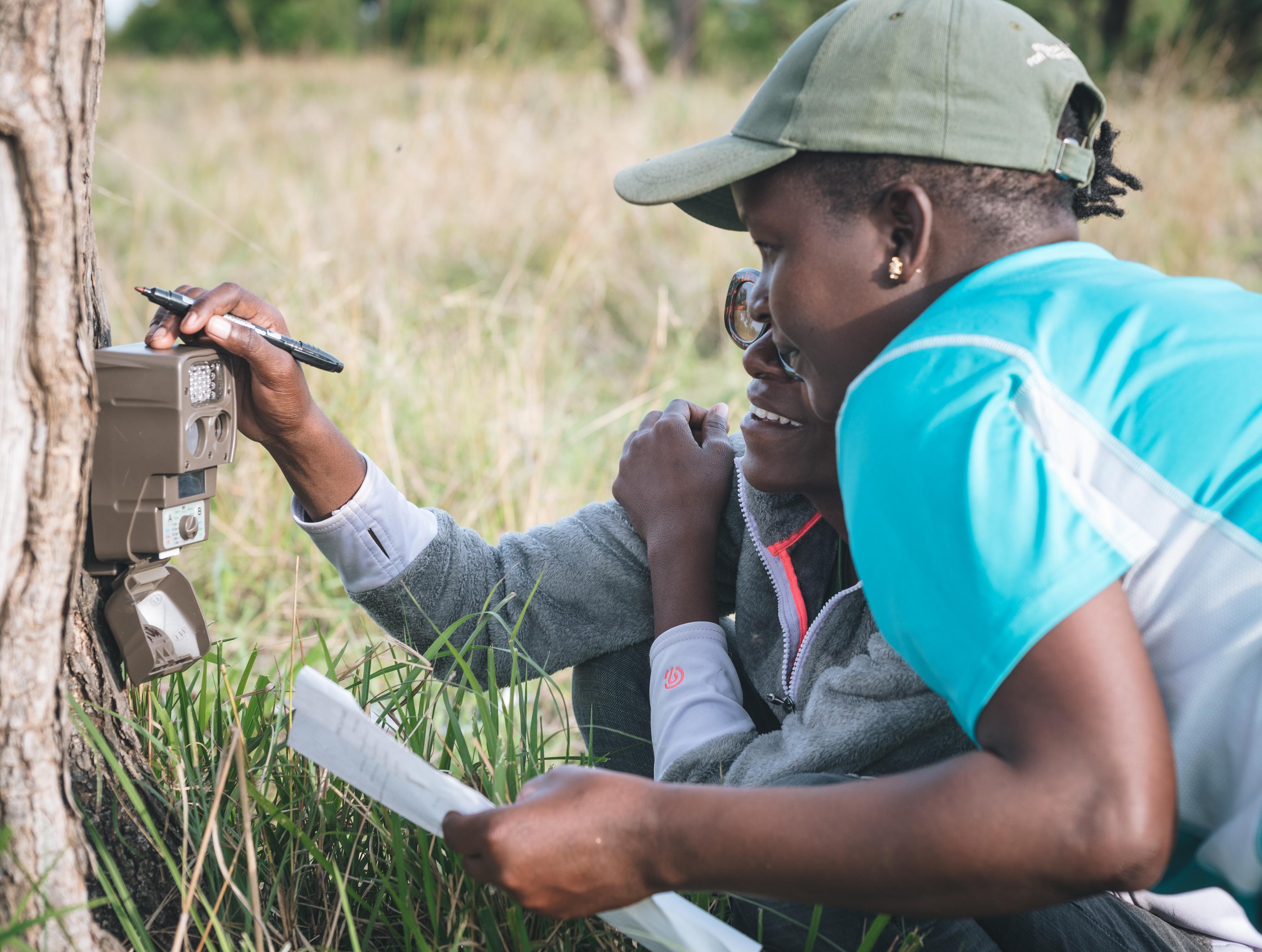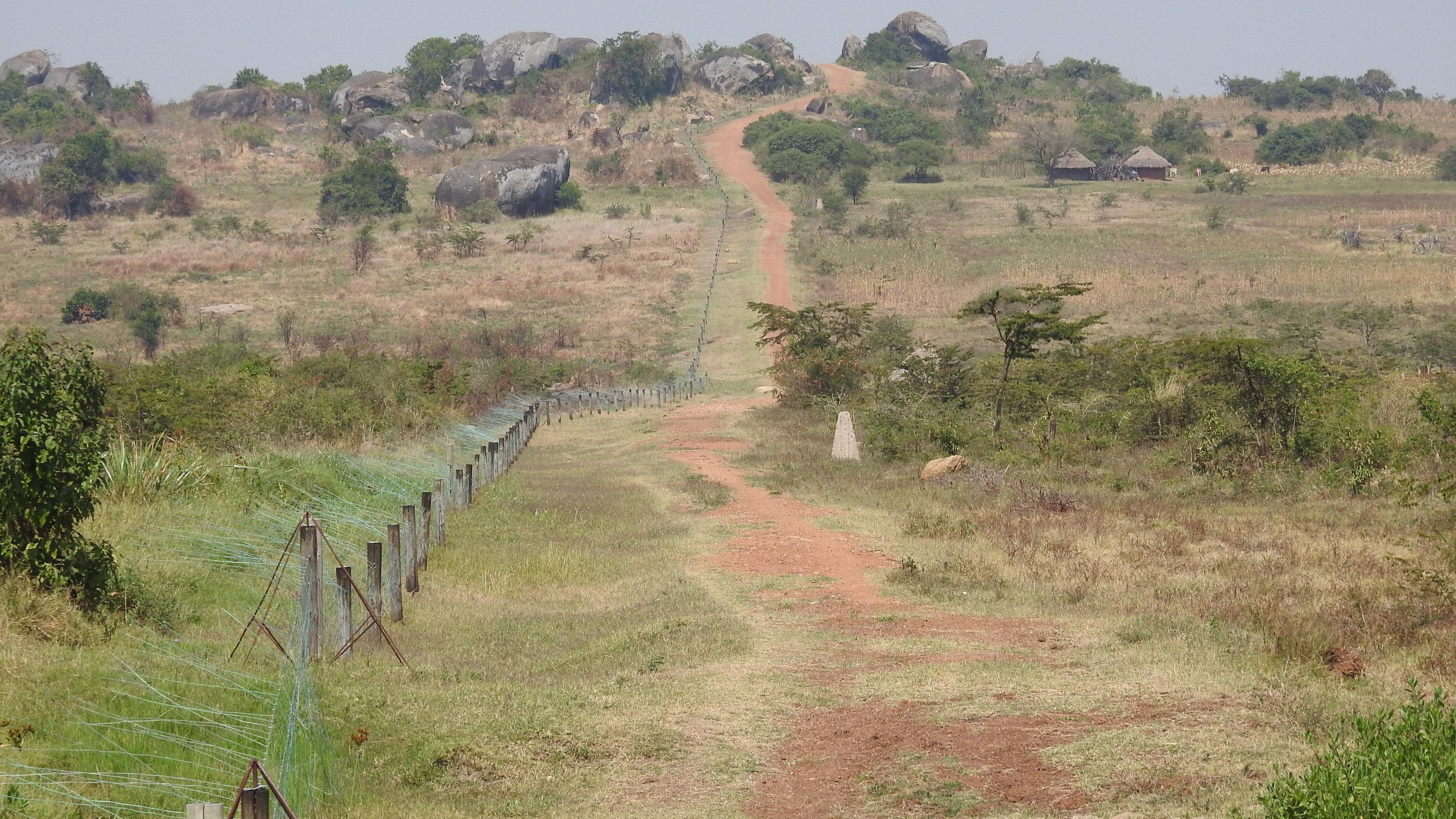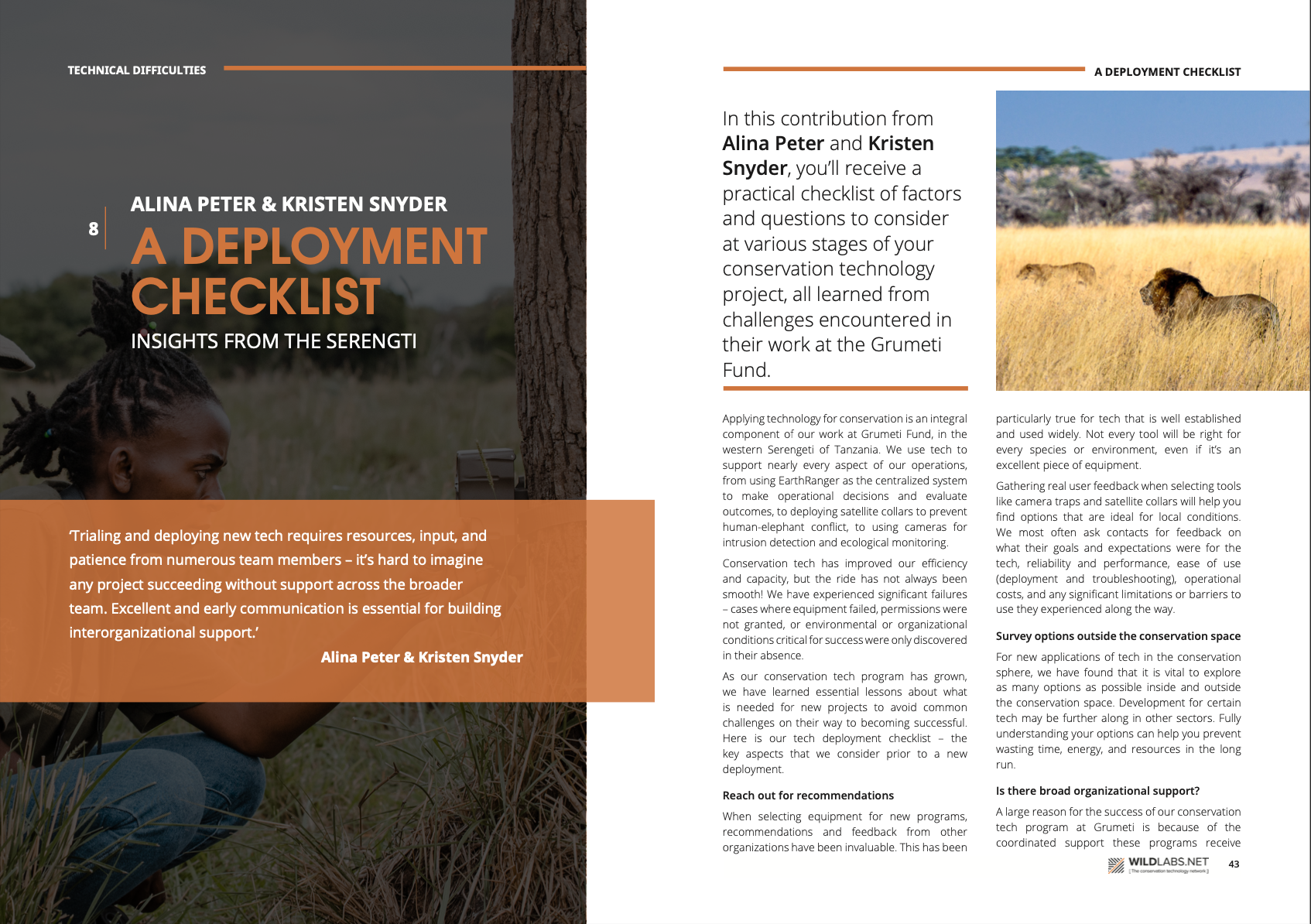
Applying technology for conservation is an integral component of our work at Grumeti Fund, in the western Serengeti of Tanzania. We use tech to support nearly every aspect of our operations, from using EarthRanger as the centralized system to make operational decisions and evaluate outcomes, to deploying satellite collars to prevent human-elephant conflict, to using cameras for intrusion detection and ecological monitoring.

We have used a variety of camera traps for different purposes. Pictured here are participants in the Women in the Field course practicing setting up cameras to monitor wildlife.
Conservation tech has improved our efficiency and capacity, but the ride has not always been smooth! We have experienced significant failures – cases where equipment failed, permissions were not granted, or environmental or organizational conditions critical for success were only discovered in their absence.
As our conservation tech program has grown, we have learned essential lessons about what is needed for new projects to avoid common challenges on their way to becoming successful. Here is our tech deployment checklist – the key aspects that we consider prior to a new deployment.
Reach out for recommendations
When selecting equipment for new programs, recommendations and feedback from other organizations have been invaluable. This has been particularly true for tech that is well established and used widely. Not every tool will be right for every species or environment, even if it’s an excellent piece of equipment.
Gathering real user feedback when selecting tools like camera traps and satellite collars will help you find options that are ideal for local conditions. We most often ask contacts for feedback on what their goals and expectations were for the tech, reliability and performance, ease of use (deployment and troubleshooting), operational costs, and any significant limitations or barriers to use they experienced along the way.

An elephant cow, Mkomre, who is fitted with a GPS collar to better understand elephant utilization of human dominated areas, and to prevent human-elephant conflict.
Survey options outside the conservation space
For new applications of tech in the conservation sphere, we have found that it is vital to explore as many options as possible inside and outside the conservation space. Development for certain tech may be further along in other sectors. Fully understanding your options can help you prevent wasting time, energy, and resources in the long run.
Is there broad organizational support?
A large reason for the success of our conservation tech program at Grumeti is because of the coordinated support these programs receive across all levels of the organization. In our experiences, having leaders who incorporate conservation tech into the larger organizational vision and are invested in securing funding and developing relationships has been critical to the success and longevity of programs.
Equally as important has been the support from colleagues. Trialing and deploying new tech requires resources, input, and patience from numerous team members – it’s hard to imagine any project succeeding without support across the broader team. Excellent and early communication is essential for building interorganizational support. This may sound simple, but it’s easily overlooked when working in a fast-paced environment where teams are over-extended - as they often are in the conservation sector!
Our smoothest deployments and most successful programs are those in which the team has a good understanding of the project’s significance, value, timeline, and their own role within the project. This means helping the team maintain realistic expectations for required inputs, timelines, and outcomes, and allowing ample opportunities to provide feedback or make adjustments so that the tech works within operational constraints.

Is internal capacity aligned with the tech requirements?
In our experience, on-the-ground capacity is the greatest factor that determines whether deployment of new technology will be sustainable. It is critical to consider existing skillsets and whether those are compatible with what you are trying to implement, or whether it’s feasible to develop the required skills.
Our conservation tech program’s greatest asset is having qualified, technically trained individuals on-site, ready and able to take responsibility for maintenance and troubleshooting. Intimate knowledge of the deployment site, capacity to evaluate equipment from a technical perspective, rapid responses when issues arise, ability to physically handle and repair devices, and a common spoken language are just a few of the benefits.
Are the developers committed to long-term support?
Even with in-house technical expertise, ongoing support from developers when trialing or deploying new tech is always important. Failures are part of development, and refinement is always needed. Relationships with developers can make or break a project, ultimately deciding whether this process is exciting and productive or extremely frustrating. We look to work with developers who are responsive and not over-extended, set realistic expectations, and are passionate about the tech in development.
What permissions are required?
The permissions process for certain types of tech can require lengthy lead times; furthermore, if the tech is new, the process may be unclear.
In Tanzania, for example, deploying satellite collars can require up to 8 months of advance planning to secure the necessary permits, and permits must be renewed annually. Likewise, drones are not currently a feasible piece of tech to use for our routine management needs because of the difficulties in obtaining permissions and the very short renewal period.
We try to learn as much as possible about the permissions process before committing to implementing a new tool. Building in additional lead time is also important, as is expecting things not to go exactly according to plan, a critical lesson for anyone working in the ever-evolving world of conservation tech.
We have also learned that, as exciting as some tech may be, there is a need to be practical and to know when the requirements for implementation outweigh the potential applications.
Are there external factors that could lead to underperformance or failure?
Environmental conditions, community support, security risks, sensitivity among stakeholders – these are all factors that can present challenges to successful deployments. It’s unlikely that we will ever be aware of all these factors in advance of a new deployment, but we have learned to minimize risks by utilizing internal expertise and seeking feedback from other organizations.
In advance of constructing a trial electric fence for black rhino security and aimed at preventing human-elephant conflict, we conducted extensive due diligence to select an appropriate and effective design, and to implement the necessary protocols to maintain the fence and monitor and prevent negative ecological impacts. We learned from the successes and challenges of other organizations, and harnessed internal expertise to modify the design and protocols to suit local circumstances.

The fence along Ikorongo GR is of the ‘elephant short fence’ design, which we were introduced to at Lewa Wildlife Conservancy. This design features angled outriggers which are electrified and prevent elephants from accessing unelectrified components (like poles), and pushing the fence over.
We were introduced to the ‘elephant short fence’ design at Lewa Wildlife Conservancy, which we ultimately decided best suited our management goals. We anticipated that a variety of factors like flooding could damage the fence, making maintenance difficult and impairing the integrity of the fence. To make maintenance simple and fast, the Conservation Management team suggested fitting the bottom of fence posts with metal spikes that could be driven into the ground (rather than digging holes and placing posts in concrete). This design has had the added benefit of making the fence more flexible, leading to less damage overall.
On the other hand, prior to deploying camera traps for ecological monitoring along the reserve boundary, we did not effectively utilize internal resources or seek extensive feedback on the deployment – if we had, we likely could have avoided the very painful theft of many camera traps! With input from the law enforcement and community outreach teams, we likely would have selected alternative camera trap models that were more discrete (efforts to disguise the cameras were ineffective), or changed the deployment locations.
While some of this advice may seem straightforward to experienced conservation tech users, their simplicity is precisely why these points are so important to keep in mind, as the fundamental considerations of deployment can so often be taken for granted. The difference between successfully navigating a challenge - or avoiding a failure altogether- frequently comes down to thoughtful and thorough planning with your team. Whether it’s your first time or 500th time deploying conservation technology in the field, time spent considering the big picture and small details of your deployment will never be time wasted.
Download the Case Study
This case study is the eighth in our Technical Difficulties Editorial Series. The full series will be available as a downloadable issue in December 2021. This case study is now available for download here.
About the Authors
Alina Peter, Conservation Tech Specialist, OPS Room Coordinator, Grumeti Fund
Alina Peter’s role includes reviewing reports from the scouts in the feld, ensuring Earthranger and all integrated tech (radios, collars, vehicles & camera traps) are functioning, managing the radio network and coordinating any active operations. Alina has an MBA in IT Management.
Kristen Snyder, Head Scientist RISE, Grumeti Fund
As Head Scientist, Kristen leads the applied research program Research and Innovation for the Serengeti Ecosystem (RISE). Kristen’s research background is in HWC and co-existance, which she addresses using an interdisciplinary suite of tools including household surveys, camera traps, animal movement, spatial modeling, and remote sensing.




Add the first post in this thread.